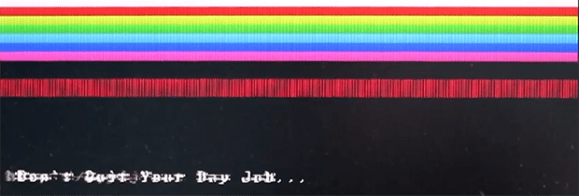11
How to Produce 640×480 Color VGA Video From an 8-Bit Arduino
640x480, 8-bit, arduino, VGA Comments Off on How to Produce 640×480 Color VGA Video From an 8-Bit Arduino
PK @ dqydj.net writes:
Let me set this up for you: most 8-bit AVRs in the wild (I happened to use an Arduino Nano for this project) are running at 16 MHz. That’s 16,000,000 calculations per second… a very respectable number for most embedded applications.
The VGA industry standard, which is pretty much the default case “we-can-always-fallback-to-this” video standard (640 pixels wide by 480 pixels tall by 60 frames per second), requires pixels to be clocked out at 25.175 MHz:
25,175,000 > 16,000,000.
And that was just one of the barriers to pulling off this silly project. And, yes, with the hack I told you about last time (Please see my notes below), more is possible without overclocking the Arduino – roughly 800 or so pixels wide in 4 bit color should be doable with a 16MHz part, and, probably 1024 pixels in 4 bit color are in reach for 20 MHz clocked parts. (If you’re willing to drop to 2 or 1 bit color and spend a ton on ICs that can handle even faster clocks, you can hit HD resolutions – but I think you’ll run into financial constraints before you max out on the technical side)
How to Produce 640×480 Color VGA Video From an 8-Bit Arduino - [Link]

 There are dozens, if not hundreds of examples around the Intertubes of an Arduino generating a VGA video output. The Arduino isn’t the fastest chip by far, and so far, all of these VGA generation techniques have peaked out at lower resolutions if you want to control individual pixels.[PK] has
There are dozens, if not hundreds of examples around the Intertubes of an Arduino generating a VGA video output. The Arduino isn’t the fastest chip by far, and so far, all of these VGA generation techniques have peaked out at lower resolutions if you want to control individual pixels.[PK] has 
